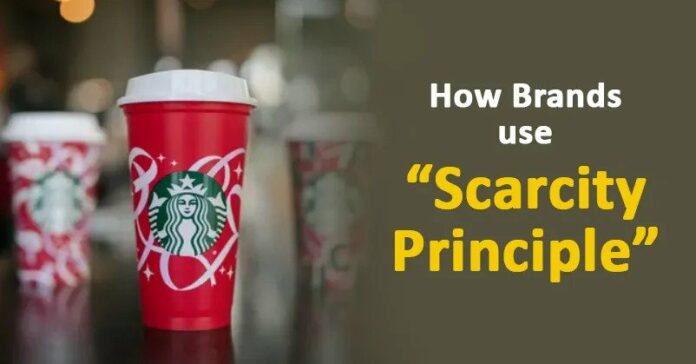Ever questioned why limited-edition goods are so much more sought-after? Why is that particular rare Louis Vuitton bag, which can cost up to $4000/-, so much more enticing than another handbag of the same brand with a lower price tag?
Call it rarity, exclusivity, or simply the fear of losing out. Everything boils down to a single concept. The “Scarcity Principle” is that.
Meaning
The guiding philosophy is, “If something is difficult to obtain, it must be worthwhile.”
Any product or offer is seen to have a higher value the more uncommon or challenging it is to purchase it or take advantage of it. This is because we would lose interest in purchasing the goods if they were not demonstrated to be in high demand.
Companies frequently employ strategies like limited product availability or limited-time promotions to increase sales and revenue.
How to increase sales using the Scarcity Principle
1. Building up brand identity
Before making things unique, it’s crucial to generate interest in them. Make it popular enough for buyers that when a product becomes scarce, it becomes more appealing to buyers.
The product itself must, however, be interesting as well. Consider limited-edition artwork.
2. Target a niche customer group
The concept behind this is to limit the number of people who can purchase the product, as opposed to making it open to everyone. For instance, fewer individuals would own a Tesla S than a Model Y.
Examples of brands using this Principle
Let’s examine three businesses that successfully applied this idea and saw enormous benefits.
1. LEGO
LEGO produces limited-edition and unique sets for enthusiasts and skilled builders. For example, post-retirement sets can sell for up to five times the retail price, and limited-edition ‘Stranger Things’ sets went like hotcakes.
2. Starbucks
The coffee chain frequently offers its customers limited-edition products. But each year during the holiday season, Starbucks begins offering coffee in red cups to draw customers and encourage them to post pictures on social media, which helps to increase sales.
3. Amazon
We have all encountered phrases like “Only three left in stock” while buying on Amazon. The statement “Want it tomorrow?” also supports it. This aids in generating a sense of scarcity, encouraging customers to submit orders rather than risk missing out on their favorites.
Follow and connect with us on Facebook, LinkedIn & Twitter

